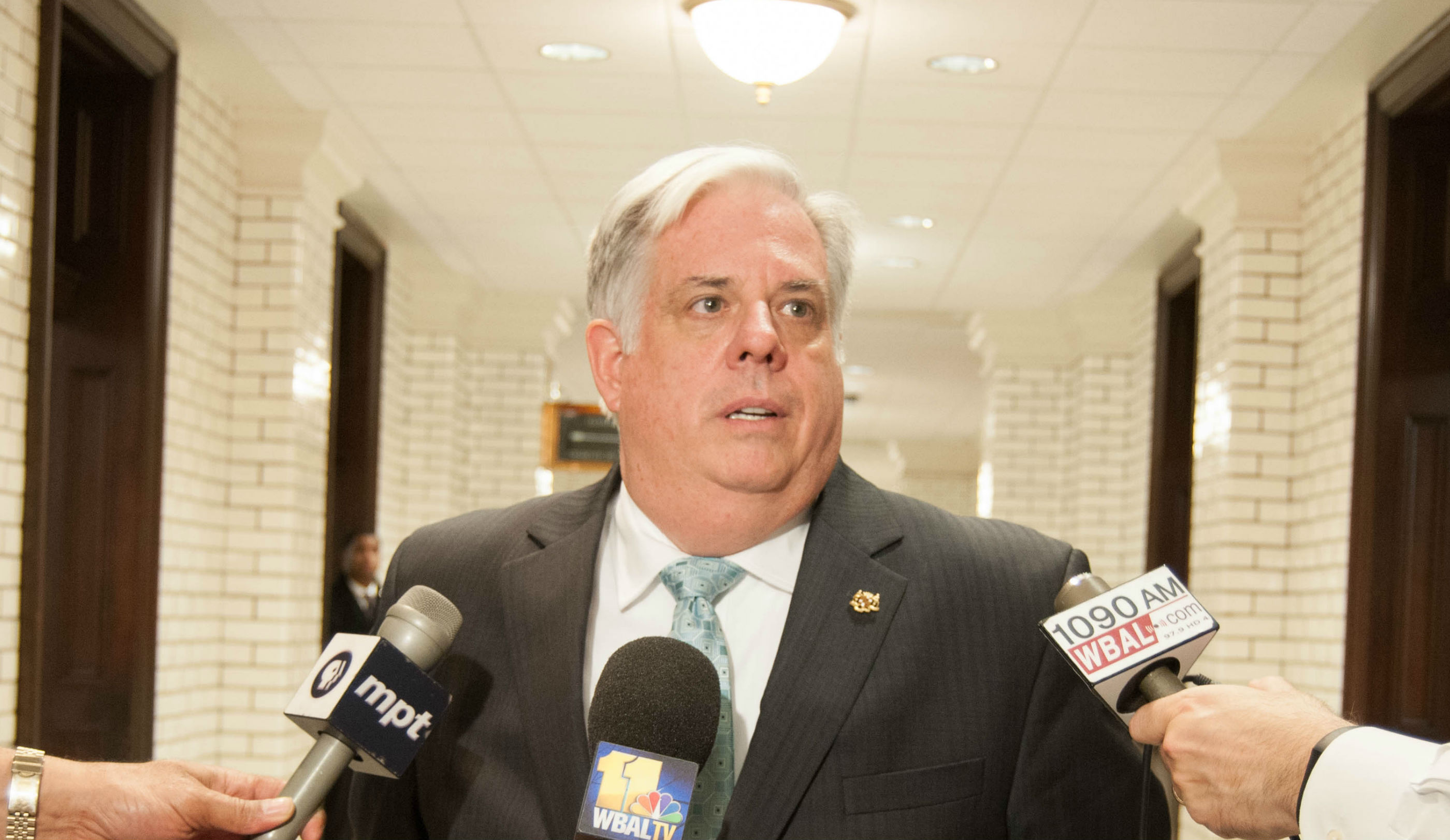By Len Lazarick
Len@MarylandReporter.com
What does a Maryland lieutenant governor do for $125,000 a year, besides hanging around and waiting for the governor to become incapacitated?
Whatever the governor tells him or her to do.
That’s what ex-Gov. Bob Ehrlich told former Massachusetts Gov. Mitt Romney last month as they had a joking exchange about Romney being “unemployed” and “available” to serve on Ehrlich’s ticket.
“In our constitution, the lieutenant governor in Maryland has no constitutional authority at all – only what the governor gives them,” Ehrlich told Romney.
Indeed, the 1970 constitutional amendment that restored the post of lieutenant governor after it had been abolished a century before says the LG, as Ehrlich was fond of calling Michael Steele, “shall have only the duties delegated by the Governor.”
Ehrlich says his choice for lieutenant governor, Mary Kane, will have responsibility for economic development – a fairly common assignment for lieutenant governors around the country – and for criminal justice. Her main responsibility at the moment appears to be to help him get elected by boosting his appeal to women and Montgomery County voters.
Helping the top guy win important groups had appeared to be the main job of then-Del. Anthony Brown when then-Mayor Martin O’Malley chose him more than six months before the 2006 filing deadline, partnering O’Malley with an African-American legislator from vote-rich Prince George’s County.
Pols and professors seriously question whether LG running mates, like vice presidential candidates, do much good at all for the top of the ticket. There is an argument that they can do some harm.
Lt. Gov. Kathleen Kennedy Townsend’s choice of Admiral Charles Larson, an older white man who had to switch from the Republican Party, was seen as a pick that did some harm in a state with a heavy black Democratic vote – especially when Republican Ehrlich chose Michael Steele, the first African-American on any statewide ticket.
Democrats are persisting in efforts to make the Ehrlich’s choice of Kane do some harm by tying her to a federal lawsuit against her husband’s moving company involving overcharges and underpay to workers. Ehrlich insists the suit was thoroughly vetted before Kane’s choice, but it’s not unheard of for the U.S. Justice Department to play a little politics in how and when it pursues a case.
The office of lieutenant governor in Maryland was re-created after Republican Gov. Spiro Agnew resigned to become President Richard Nixon’s VP, and the Democratic legislature elected the Democratic speaker of the House of the Delegates, Marvin Mandel, to succeed him.
Mandel chose Montgomery County Sen. Blair Lee III to be his LG and gave him significant control over the budget, according to Mandel’s recent memoir and other accounts of the day. Of the seven people who have served as the lieutenant governor since then, he was the only one to be Acting Governor for more than a few days, while Mandel recovered from a heart attack and a federal indictment. But Lee lost a bid to be elected in his own right.
In addition to a small staff, an SUV with state police drivers and an historic office once used by Thomas Jefferson in the oldest part of the State House, governors have delegated major duties to their LGs.
Brown, the highest U.S. elected official to have served in Iraq, has had duties dealing with veterans, the Base Realignment and Closure process that will bring thousands of jobs here, and now the implementation of health care reform.
In Maryland, like two dozen other states, the governor and lieutenant governor run as a party ticket. In 18 states, the LG is a completely independent office, sometimes with official duties like presiding over the state senate (modeled after the U.S. vice president), and in other states as head of departments. In Louisiana, for instance, the LG heads the Department of Culture, Recreation and Tourism – not a real plum job these days if you don’t like oil on sandy beaches.
Despite the failure of Townsend and Lee to get elected governor, national statistics show “it’s twice as good to be lieutenant governor,” said University of Virginia Professor Larry Sabato earlier this year in a report to the National Lieutenant Governors Association. He was comparing their chances to the success rate of attorneys general.
“Since 1984, there have been exactly 250 state attorneys general, but only 28 (a mere 11%) became governors,” Sabato said. “This is precisely half the gubernatorial success rate of lieutenant governors. In the last quarter-century, fully 22% of the state No. 2’s became No. 1.”
So there may be hope for Maryland LGs in four years after all, despite Attorney General Doug Gansler’s lack of opposition this election.






Recent Comments